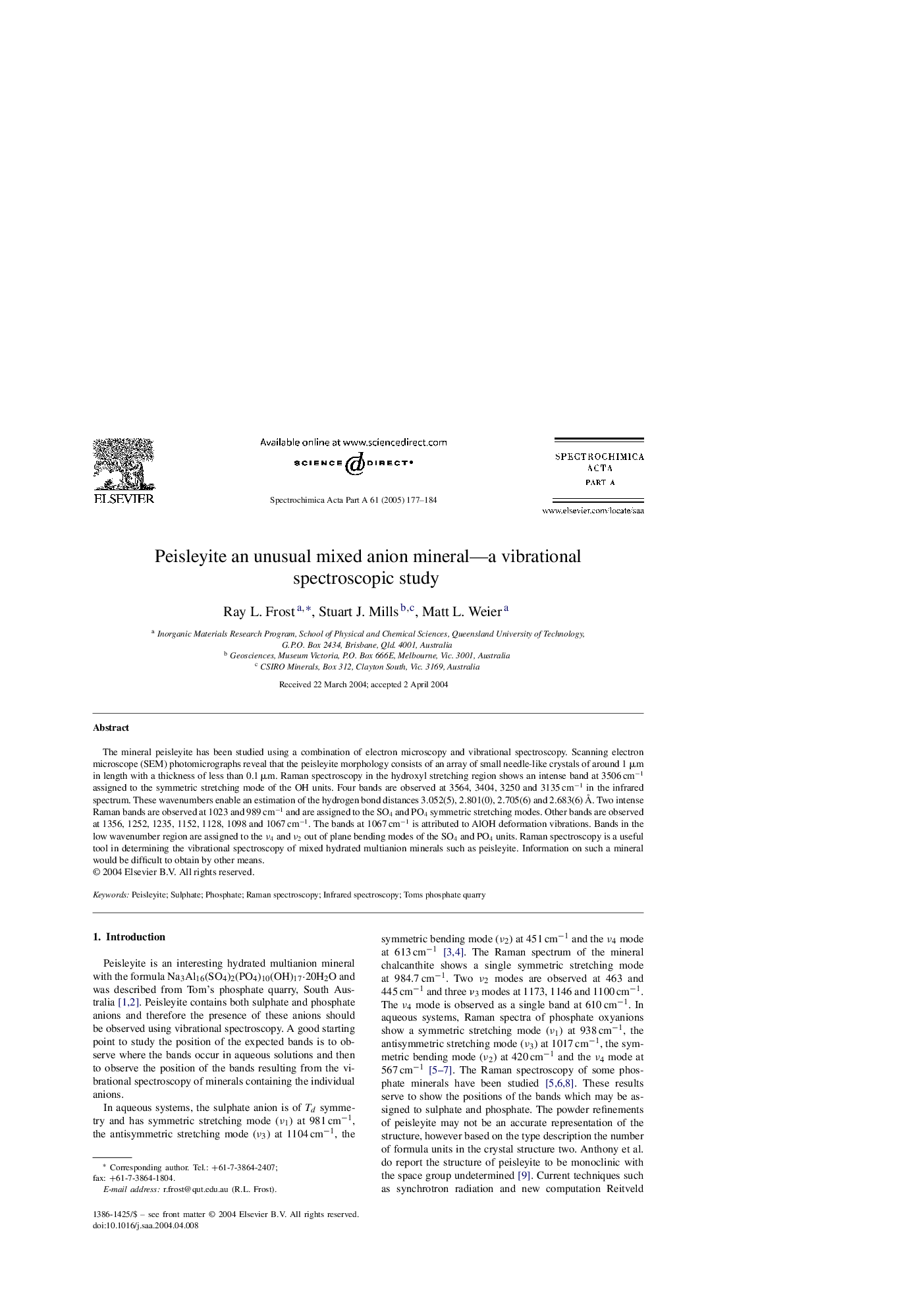| Article ID | Journal | Published Year | Pages | File Type |
|---|---|---|---|---|
| 9757104 | Spectrochimica Acta Part A: Molecular and Biomolecular Spectroscopy | 2005 | 8 Pages |
Abstract
The mineral peisleyite has been studied using a combination of electron microscopy and vibrational spectroscopy. Scanning electron microscope (SEM) photomicrographs reveal that the peisleyite morphology consists of an array of small needle-like crystals of around 1 μm in length with a thickness of less than 0.1 μm. Raman spectroscopy in the hydroxyl stretching region shows an intense band at 3506 cmâ1 assigned to the symmetric stretching mode of the OH units. Four bands are observed at 3564, 3404, 3250 and 3135 cmâ1 in the infrared spectrum. These wavenumbers enable an estimation of the hydrogen bond distances 3.052(5), 2.801(0), 2.705(6) and 2.683(6) Ã
. Two intense Raman bands are observed at 1023 and 989 cmâ1 and are assigned to the SO4 and PO4 symmetric stretching modes. Other bands are observed at 1356, 1252, 1235, 1152, 1128, 1098 and 1067 cmâ1. The bands at 1067 cmâ1 is attributed to AlOH deformation vibrations. Bands in the low wavenumber region are assigned to the ν4 and ν2 out of plane bending modes of the SO4 and PO4 units. Raman spectroscopy is a useful tool in determining the vibrational spectroscopy of mixed hydrated multianion minerals such as peisleyite. Information on such a mineral would be difficult to obtain by other means.
Related Topics
Physical Sciences and Engineering
Chemistry
Analytical Chemistry
Authors
Ray L. Frost, Stuart J. Mills, Matt L. Weier,
